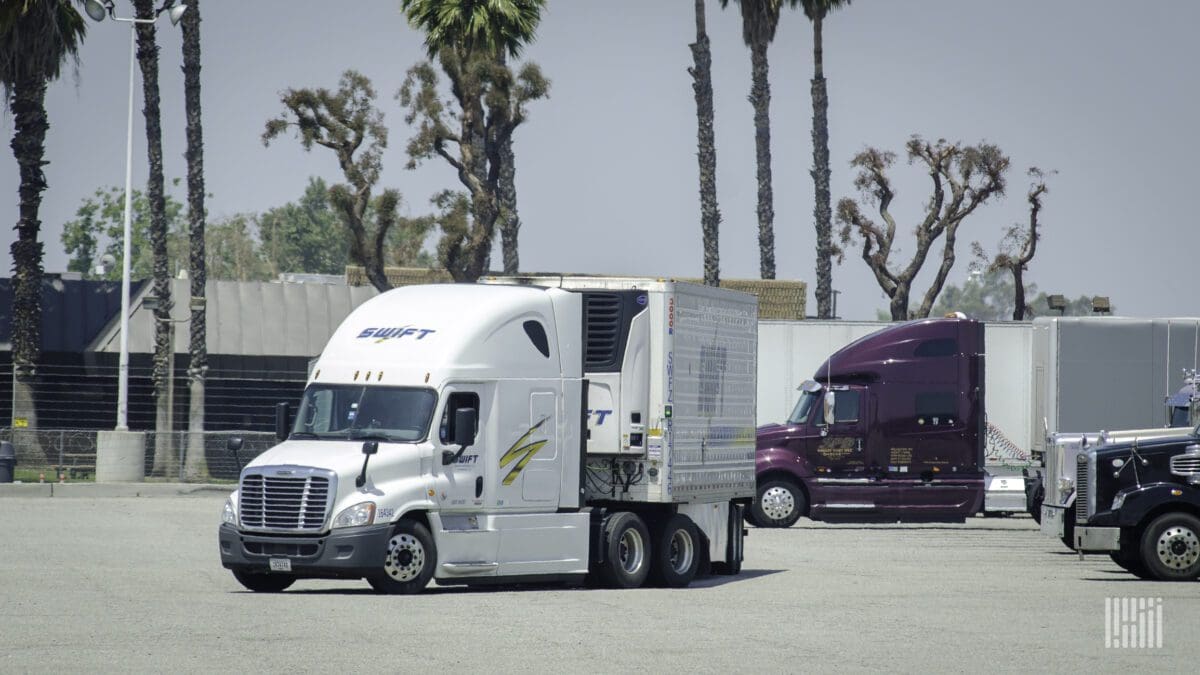Source: Freight Waves
This story is part of a series concerning California’s impending regulations on zero-emissions vehicles, which have the potential to upend the American trucking industry. You can follow along with the stories here.
As Sean Cocca said at the start of a recent webinar, the ACF rule is here.
And then he followed up with an obvious question: What comes next?
Cocca is the director of compliance at the advisory firm of TRC (formerly GNA), and it was his voice on a recent webinar hosted by ACT News that tried to bring clarity to the complex regulations under California’s Advanced Clean Fleets (ACF) rule.
With the full California Air Resources Board (CARB) adopting the Advanced Clean Fleets rule in late April, it sets the stage for what will amount to an almost 20-year process that is likely to end one of two ways.
The first is that the sheer economic heft of California, as well as the states that say they will follow its lead, will bring about such massive technological change that the fleets of most of America by 2042 will be powered by hydrogen, batteries, renewable diesel or … well, we don’t know yet what might be lurking out there as part of a technological revolution.
Or we will find that the sweeping range of complaints that California is too far ahead of the technology and infrastructure curve to deliver on such ambition was correct all along, and the result is vehicle market chaos.
But while there might be significant public hand-wringing, in management suites the focus should be on compliance with the rule. As Cocca said, if such work hasn’t begun already, it needs to start.
The drayage portion of the ACF rule has been a clear presence in that industry, as fleets lurch toward the rule’s ban on registering new internal combustion engine (ICE) drayage vehicles in California after the start of 2024. Vehicles to be added to the state registry after Jan. 1 must be zero-emission vehicles (ZEVs). If there is an ACF-created crisis, it’s likely to become evident first in drayage, possibly as early as next year.
Beyond the Jan. 1 deadline, there are no rules about when a drayage fleet needs to become 100% ZEV. But there are rules that govern how long a vehicle can stay in the drayage registry; anything before a 2010 model year is already barred. What the state has set as the “minimum useful life” of a truck is the earlier of 18 years or 800,000 miles or a minimum of 13 years if the truck has over 800,000 miles. After that, it needs to be retired. There also are new requirements governing reporting of mileage totals to the state.
The plan is that the “no new ICE” rule, combined with the limitations on how many miles and years a truck can stay on the road, will gradually force ICE engines out of the drayage fleet to be replaced by ZEVs.
But unlike drayage, the targets in Class 8 trucking may seem more distant and are far more specific.
For the larger “high-priority” fleets as defined in the ACF rule, the big decision they face is whether to stop buying ICE vehicles completely next year or begin the transition through use of the “Milestones” that have been established for the transition.
The “no new ICE” provision for high-priority fleets is similar to the rule governing drayage. It takes effect Jan. 1. The Milestones are the alternatives for high-priority fleets and it takes a table to understand how they work.



